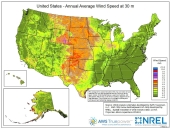Hello, I have been researching indoor gardening for about a year now. I am attempting to make a self-perpetuating indoor garden in my house (i own it so if reconstruction is needed... so be it) Basically i want to post post how i'd like to set up my garden, i encourage you all to comment and criticize because i am not experienced at this. So basically this is how i want to set up the garden. (also i live in vermont so theres no chance of outdoor year round plants)
1. Solar power and lighting; 5 230 watt solar panels should give about 4 kilowatts per day or 120 kw per month (assuming there's only 4 hours of optimal light per day) this should be enough to power 6-8 t5 4ft florescent lights and 2 100 watt hps lights
2. Heat; the room i have setup right now is a sun room this is attached to the house and is heated via the furnace/wood stove.
3. Soil; here is where i am having the most trouble. Basically using the law of conservation of energy, i am trying to propose a self perpetuate vermicompost system. Staging separate vermicompost boxes should allow me to have soil year round, but we eat most of the fruit and veggies that are grown, hence why i am having a problem. I am planning on growing sphagnum moss and grass as bedding for the worms, but i am still assuming that this wont be enough to perpetuate a cycle because we eat most of the produce and excrete it outside the vermicompost. so there is a loss of energy, would it possible to grow soil-less plants or just another plant in general to compensate for the loss of us eating the produce. I am really in the dark right now and if someone out there could give me a clue to this itd be much apppreciated. I am really trying to make a soil system that does not need to be replaced, assumming at some point there will be no garden store to buy soil at. (of course i can get soil outside but i know that in the recent years they have aerially sprayed areas close-by with pesticides)
4. Water; rain water catching system can be built easily, also another solution is to set up a solar still using plastic pvc pipe and a few other materials. This is not supposed to be the most effective water situation obviously tap water is available and i do not have access to a spring at this moment. so please be considerate with the critique because i am trying to make a system in which the least amount of electricity and oil is needed.
5. Growth; with the artificial lighting and the vermicompost soil (maybe mixed with peat moss) should be enough to keep the plants healthy and enzyme plentiful. rain water or distilled water should not have to many bacteria or viral infections to hurt the plants but again please critique.
6. Back to the
compost; using the origanic material grown in the garden to supplement the vermicompost on a continual basis.
Id really love to have some feedback, thanks a bunch.


































